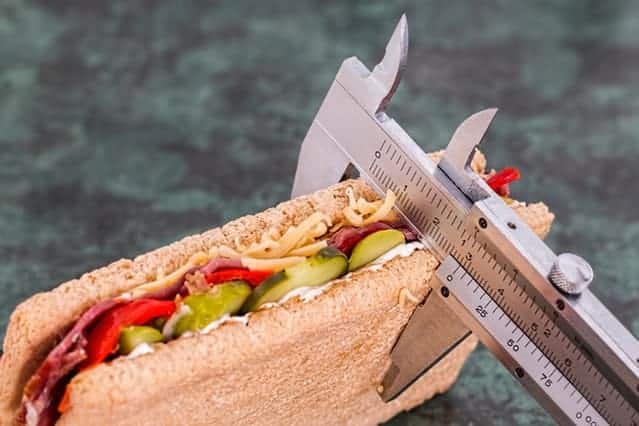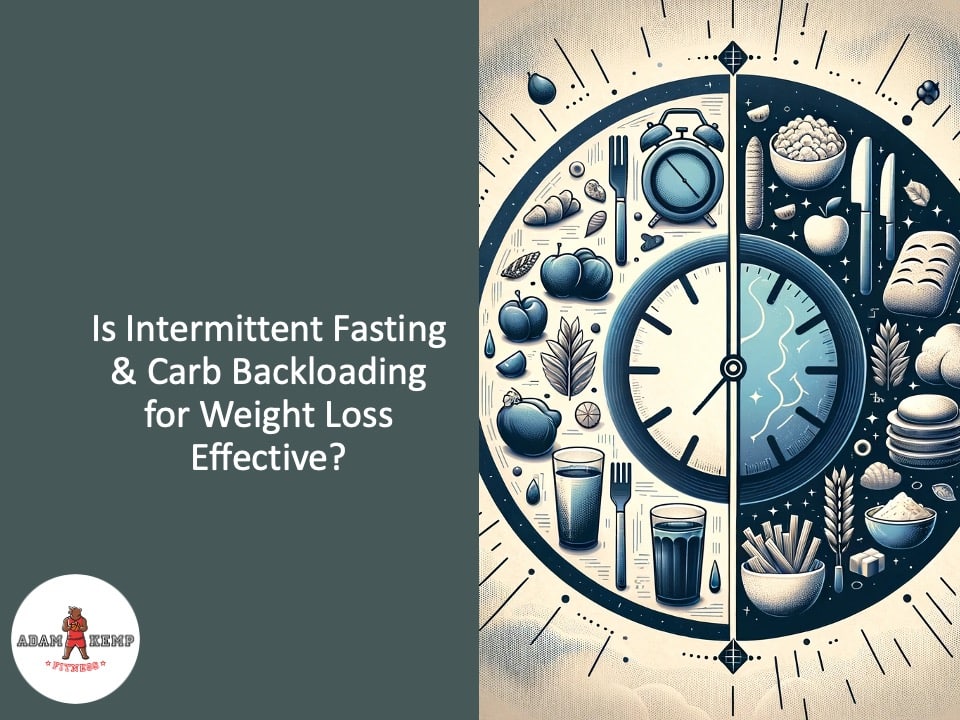Is Intermittent Fasting and Carb Backloading A Good Combo?
Intermittent fasting and carb backloading are both powerful strategies for weight management, body composition, and metabolic health.
When combined, these two approaches may provide even more unique benefits that neither can fully achieve on its own.
Intermittent fasting focuses on when you eat, using structured fasting and feeding windows to improve insulin sensitivity, improve fat oxidation, and simplify nutrition without strict calorie counting.
Carb backloading, on the other hand, emphasizes when to eat carbohydrates—strategically consuming them later in the day, often after training, to optimize glycogen replenishment, muscle recovery, and hormonal balance.
Together, these methods can create a synergistic framework that improves metabolic flexibility, supports performance, and makes adherence easier for many people.
Understanding how they complement each other requires looking at the science of circadian biology, nutrient timing, and exercise physiology.
For anyone considering whether this approach is right for them, the key question remains: is intermittent fasting and carb backloading a good combo?
What is Intermittent Fasting?

Intermittent Fasting (IF) is a unique concept in dietary practices that aligns with “ancestral eating habits”, placing emphasis on the timing of eating and fasting periods rather than solely on food choices.
This approach encompasses various methods, such as Time-Restricted Feeding (TEF) and Fasting-Mimicking Diets (FMD), offering adaptability to suit different lifestyles.
Common IF methods include Alternate Day Fasting, the 5:2 approach (which involves five days of regular eating and two days of minimal calorie intake), and the increasingly popular 16/8 method, entailing 16 hours of fasting followed by an 8-hour eating window (Patterson & Sears, 2017).
Simplicity and Flexibility
Using intermittent fasting for weight loss and other body composition and health changes is generally well-recognized for its simplicity and flexibility.
Unlike conventional diets that necessitate rigorous calorie counting or stringent food restrictions, IF pivots on the timing of food intake.
This approach endows individuals with the liberty to align their eating patterns with personal preferences and lifestyles while maintaining periods of dietary discipline (Mattson et al., 2017).
A Holistic Approach to Health
IF transcends mere weight loss, showing promising results in enhancing body composition and overall health.
It advocates for a balanced approach to nutrition, underscoring the importance of consuming nutrient-dense foods within the designated eating windows.
This nutritional balance is pivotal for sustained health and effective weight management.
Studies indicate that IF is effective in reducing fat mass, improving insulin sensitivity, and preserving muscle mass.
However, the diversity in research methodologies poses challenges in forming overarching conclusions.
Specifically, the 16/8 method has garnered attention for its beneficial impact on health markers (Sutton et al., 2018).
IF has also been recognized for its role in reducing waist circumference and positively altering fat distribution, which are crucial in mitigating the risk of metabolic disorders.
Moreover, IF has been observed to influence the gut microbiota beneficially, fostering the growth of advantageous bacterial families and thereby contributing to overall health (Gabel et al., 2018).
What is Carb Backloading?

Carb Backloading is an innovative dietary approach that strategically times carbohydrate consumption to align with the body’s natural hormonal rhythms.
Predominantly, this method involves consuming the bulk of daily carbohydrates in the latter part of the day, especially in the evening.
This timing is designed to work synergistically with the body’s hormonal fluctuations, potentially enhancing appetite control and optimizing metabolic responses, such as insulin sensitivity (Keim et al., 1995).
Aligning Carbohydrate Intake with Hormonal Fluctuations
The premise of Carb Backloading is rooted in the understanding of the body’s circadian rhythms and hormonal responses.
By consuming carbohydrates later in the day, it potentially capitalizes on the body’s natural insulin sensitivity, which tends to be higher in the afternoon and evening.
This can lead to better glycogen replenishment in muscles and reduced likelihood of fat storage.
Daily Implementation of Carb Backloading
A typical day on the Carb Backloading plan often starts with lighter meals or even a fasting period, gradually increasing caloric intake as the day progresses.
The day usually culminates in a carb-rich meal in the evening, ideally after physical activity.
This approach not only aligns with hormonal rhythms but also supports muscle recovery and growth, particularly after exercise.
For individuals who engage in morning workouts, Carb Backloading can be adapted to include a post-exercise carbohydrate intake.
This modification ensures effective muscle recovery post-training while still benefiting from the Carb Backloading strategy later in the day.
It’s a flexible approach that can be tailored to individual training schedules and dietary preferences.
Benefits of Combining Intermittent Fasting and Carb Backloading
Merging the principles of Intermittent Fasting (IF) with Carb Backloading presents a dynamic strategy that caters to those aiming for weight loss, muscle building, and overall wellness.
This dual approach harnesses the strengths of both methods, creating a nuanced dietary framework that can be customized according to individual health goals and lifestyle patterns.
When combining IF and Carb Backloading, it’s crucial to understand how these methods complement each other.
Improved Metabolic Flexibility
IF’s fasting periods help in improving insulin sensitivity and promoting fat burning.
When followed by Carb Backloading, particularly after exercise, the body is primed to utilize carbohydrates more efficiently for muscle repair and growth, rather than fat storage.
Optimal Energy Utilization
The fasting phase in IF can lead to increased fat oxidation, while the strategic timing of carbohydrate intake in Carb Backloading ensures that these macronutrients are used effectively for energy replenishment and muscle recovery, especially post-workout.
Customization for Lifestyle and Fitness Goals
Depending on personal schedules and fitness routines, this combination allows for flexibility.
For instance, those who work out in the morning might opt for a post-exercise carb meal, while still adhering to the fasting window of IF for the rest of the day.
Is Intermittent Fasting and Carb Backloading Good for Weight Loss?

Yes, when combined thoughtfully, intermittent fasting and carb backloading can be effective for weight loss.
Intermittent fasting promotes fat burning and improves insulin sensitivity by extending fasting windows, while carb backloading ensures carbohydrates are consumed when the body is most primed to use them for muscle recovery instead of fat storage.
Research supports both methods individually for reducing fat mass and improving metabolic health, and when paired together, they may enhance metabolic flexibility and long-term adherence (Patterson & Sears, 2017; Sutton et al., 2018).
The key is consistency, nutrient quality, and aligning carb intake with physical activity.
For individuals seeking a sustainable fat-loss strategy, intermittent fasting and carb backloading can be a good combo, provided they are adapted to personal goals, training schedules, and overall lifestyle.
How to Combine Intermittent Fasting and Carb Backloading
Bringing intermittent fasting and carb backloading together requires more than simply skipping meals and eating carbs at night.
To make this combination work effectively, you need to understand how fasting windows, training schedules, and carbohydrate timing can align to support both fat loss and muscle recovery.
When applied correctly, the two strategies complement each other, creating a flexible yet structured approach that enhances performance, body composition, and long-term health.
Choosing the Right IF Method
There are several IF patterns, such as the 16/8 method, 5:2 approach, or alternate-day fasting.
Selecting one that aligns with your daily routine and physical activity level is crucial for sustainability and effectiveness.
Timing and Quality of Carbohydrate Intake
In Carb Backloading, focus on the quality of carbohydrates, opting for complex carbs like whole grains, legumes, and vegetables.
The timing should align with the individual’s training schedule, ideally post-workout, to maximize muscle glycogen replenishment and minimize fat gain.
Balanced Nutritional Intake
Ensuring a balanced diet is essential.
This includes adequate protein for muscle repair, healthy fats for hormonal balance, and micronutrients from a variety of food sources.
Hydration should also be a priority, particularly during fasting periods.
Planning a few go-to healthy dinner ideas with quality carbs and lean protein can make this process easier and more sustainable.
Listening to Your Body
It’s important to be attentive to how your body responds to this combined approach. Adjustments might be necessary based on energy levels, workout performance, and overall well-being.
Consistency and Patience
Like any dietary change, consistency is key. Allow time for your body to adapt to this new eating pattern. Track progress and make changes as needed, keeping long-term health and fitness goals in mind.
Potential Risks & Considerations of Combining Intermittent Fasting and Carb Backloading
While Intermittent Fasting (IF) and Carb Backloading present themselves as promising strategies for weight management and health improvement, it is vital to acknowledge and address potential risks and considerations associated with these dietary approaches.
Altered Eating Patterns and Mood Changes
One of the primary concerns with IF is the potential alteration in normal eating patterns, which could lead to mood changes, especially during fasting periods.
Fasting can influence mood-regulating neurotransmitters, potentially leading to feelings of irritability or lethargy in some individuals (Michalsen & Li, 2013).
Additionally, abrupt changes in eating patterns may initially disrupt regular bodily functions and cause discomfort.
Exercise Timing Challenges
Integrating exercise into IF and Carb Backloading regimes can present challenges.
Training during fasting windows might affect energy levels and exercise performance.
Research suggests that exercise performance can be impaired during fasting, though adaptations over time may mitigate these effects (Chaouachi et al., 2009).
It’s important for individuals to listen to their bodies and potentially adjust workout intensities and timings to align with their energy levels during fasting periods.
Importance of Balanced Nutrient Intake
Maintaining a balanced nutrient intake is critical in both IF and Carb Backloading.
Neglecting this balance can lead to nutritional deficiencies, impacting overall health.
Furthermore, prolonged fasting periods, if not managed correctly, might lead to muscle protein breakdown, underscoring the importance of adequate protein intake and timing, especially for active individuals (Tinsley & La Bounty, 2015).
Ensuring a diet rich in a variety of nutrients, including vitamins, minerals, and essential fatty acids, is essential for sustaining long-term health and preventing potential negative outcomes.
Preventing Extended Periods of Starvation
It is crucial to distinguish between healthful fasting practices and extended periods of starvation, which can be detrimental.
Starvation can lead to muscle loss and a decrease in metabolic rate, which is counterproductive to the goals of IF and Carb Backloading (Varady et al., 2009).
Therefore, it is vital to structure fasting periods appropriately and ensure they are followed by nutrient-rich meals to support overall health and well-being.
Final Thoughts: Should You Try Intermittent Fasting with Carb Backloading?
Intermittent fasting with carb backloading is a flexible nutrition strategy that can support fat loss, muscle recovery, and overall metabolic health.
By focusing on both when you eat and when you consume carbohydrates, this combination aligns with your body’s natural rhythms while making long-term adherence more manageable.
- Success depends on tailoring the approach to your own schedule, activity level, and dietary needs.
- Choosing the right fasting window, prioritizing nutrient-dense foods, and timing carbs around exercise can make the method both effective and sustainable.
- Professional guidance is recommended, especially for those with unique health conditions, to ensure safety and optimization.
When applied consistently, intermittent fasting with carb backloading offers a balanced way to improve body composition, boost performance, and promote lasting health.
If you’re wondering whether intermittent fasting and carb backloading is a good combo, the answer largely depends on your goals and commitment to making it work.
Read Next: Intermittent Fasting for Weight Loss
This website does not provide medical advice. This website site does contain affiliate links, and purchases may earn a commission.
Read my Medical Disclaimer, Review Disclaimer, and Publishing Policies for more details. Use of this site indicates acceptance of these terms.



